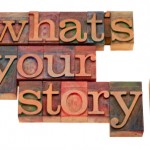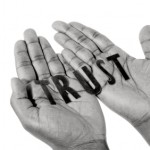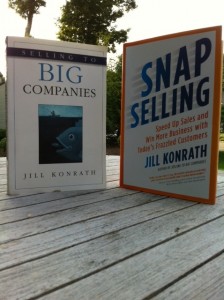Who’s a Poor Murdoch to Trust?
 Gregory (Scotland Yard detective): “Is there any other point to which you would wish to draw my attention?”
Gregory (Scotland Yard detective): “Is there any other point to which you would wish to draw my attention?”
Holmes: “To the curious incident of the dog in the night-time.”
Gregory: “The dog did nothing in the night-time.”
Holmes: “That was the curious incident.”
Silver Blaze, The Memoirs of Sherlock Holmes, by Sir Arthur Conan Doyle
Murdoch: This is the most humble day of my life…we have broken our trust with our readers…
Q: Do you accept you are ultimately responsible for this whole fiasco?
Murdoch: No.
Q: Have you considered resigning?
Murdoch: No. Because people I trusted let me down…and I am the best person to clean this up.
Mr. Rupert Murdoch, 19 July 2011, before a British Parliament Committee, ABC News
Rupert Murdoch claimed in his July 19 2011 British Parliament Committee appearance that “people he trusted” were responsible for the News of the World phone hacking scandal.
Can you say ‘cognitive disconnect?’ Few people in the word can simultaneously believe that a) Murdoch was not responsible for the hacking fiasco, b) he was done in by those whom he trusted, and c) that he nonetheless remains the best person to clean things up.
I sincerely doubt that Murdoch himself believes all three of those propositions.
And so we have yet another trust-destroying scandal, the principals posturing and spinning, and the public left asking, where is Sherlock Holmes when we need him–to ask why there was no barking dog at the scene of the crime.
And the answer is–just like in the Holmes story–because the watchdogs were very familiar with the crook whodunit.
The News Corp.hacking scandal has three points in common with most systemic failures of trust–think Enron, Watergate, and the recent financial crisis:
- “Leaders” who have a tendency to blame and an inability to confront;
- Corporate cultures based on secrecy and rules, not on virtues and values;
- The compromise of a social institution key to social trust.
Phony Leaders
Let me propose two ironclad indicators of bad leadership. First, one of my favorite gems from Phil McGee—most management problems, he feels, stem from a tendency to blame, and an inability to confront.
Rupert Murdoch’s brazenness of blaming, even in today’s climate, I still find breathtaking. It was “others” who betrayed him. Not his direct reports, of course, whom he says he trusts with his life. But “others.”
This is not new. Ken Lay and Jeffrey Skilling at Enron didn’t blame themselves, it was “others.” Ditto for Abu Ghraib in Iraq, Nixon at Watergate, and so on. Maybe the original blamethrower was King Henry II, who famously shouted, “Will no one rid me of this troublesome priest?” meaning Thomas Becket.
Someone of course did, and the King was conveniently left with what came to be known as ‘plausible deniability.’
When a “leader” moans that he has broken his public’s trust, and that this is the humblest day of his life—wait, wait for it—and then blames someone else, well, you’ve got an untrustworthy leader at the top.
The other indicator is the presence of the phrase “career-limiting move.” If that phrase is current in your company, it’s a canary in the mine for a lack of transparency. People get fired for saying or doing things they are “not supposed to say.” That is, the norm is silence, and the implied threat for speaking up is your career.
And if your company acronymizes it to CLM, double-trouble for you.
Bad Corporate Cultures
The best way to spot an untrustworthy corporate culture is to look at how it tries to be trustworthy. If it relies on secrecy and threats, well, enough said.
But in addition, a culture that relies on laws, procedures, processes, rules and compliance—and little else—is in trouble. Trustworthiness and ethical behavior are viewed in such cultures as just another set of rules to be gamed. There’s a very thin line between “keep your nose clean” and “just don’t get caught,” and that line has a way of breaking down.
A corporate culture that fosters trust, by contrast, is almost certainly one that relies on virtues and values, and that preaches them all the time.
How does News Corp. stack up? Listen to this description from Andrew Ross Sorkin’s Dealbook column:
“This is a board that qualifies for an ‘F’ in every category,” Nell Minow, a member of the board of GovernanceMetrics International and founder of the Corporate Library, a governance firm, said without any hesitation. “It is the ultimate crony board.”
Transparency? Values? I don’t think so.
Which brings us to the third trait: a threat to societal institutions of trust.
Compromised Social Institutions
Watergate is, of course, the gold standard of corruption, the poster child for scandals. How does the News Corp. scandal measure up?
Surprisingly well. That is, bad. Watergate compromised the US Justice Department, the White House, a major political party, and ultimately a President. But there was sort of a hero in that story—the press.
In the Murdoch case, the press is itself on trial. And–so is Scotland Yard. Right there, the players are bigger than in Watergate. When the cops and the press are in cahoots, you have muscle backing up politics. The rule of law is at stake.
Think I’m kidding?
Think about your perception of this case to date–even from media other than News Corp. I’ll bet your image is loaded with thrown pies, hacked phones, and trophy wives. Speculation in the US media is focused on whether it will turn out that 9/11 victims’ phones were hacked.
Meanwhile, did you know that News Corp.’s News America Marketing subsidiary has paid out $655 million dollars to settle charges of corporate espionage and anticompetitive behavior—in the US? Do you think Rupert Murdoch didn’t know about more than a half-billion dollars paid out that way?
Did you know that:
News America was led by Paul V. Carlucci, who, according to Forbes, used to show the sales staff the scene in “The Untouchables” in which Al Capone beats a man to death with a baseball bat. Mr. Emmel testified that Mr. Carlucci was clear about the guiding corporate philosophy.
According to Mr. Emmel’s testimony, Mr. Carlucci said that if there were employees uncomfortable with the company’s philosophy — “bed-wetting liberals in particular was the description he used” Mr. Emmel testified — then he could arrange to have those employees “outplaced from the company.”
You might wonder what became of Mr. Carlucci? Rupert Murdoch appointed him head of the New York Post, calling him “without peer in the consumer advertising and marketing industry.” You know the New York Post: they’re the Murdoch paper that branded a New York hotel maid a hooker on the front page. The story was hugely helpful to one Dominique Strauss-Kahn, but has not been verified by any other newspaper to date.
But I digress. The problem is that the press wields enormous power, even in allegedly educated and refined countries. So do the police. And when Scotland Yard’s leadership, and even Downing Street appear compromised by an evil corporate culture like News Corp.’s, there are serious implications for society’s ability to trust anyone.
Who’s a poor Murdoch to trust? That’s what Rupert Murdoch would have you ask.
And if you can believe the nerve of his News Corp. empire and its culture, check this clip from Fox News.
Syndicated columnist Cal Thomas explains the phenomenon as “piling on…the left has been itching to get after News Corp. for years.”
Just another witch hunt, going after poor Mr. Murdoch. Makes you wonder if he paid the guy with the pie.
For the rest of us, keep your ears open. Emulate Sherlock Holmes. Look for the barking dog, and when you don’t hear one—cry bloody murder, because someone has to.

 We all know the power of stories in business. We know too that it’s the heroes who give stories power. The hero may be a person, a brand, a company, or it may be the listener. When the story and the hero are strong, it resonates with the audience.
We all know the power of stories in business. We know too that it’s the heroes who give stories power. The hero may be a person, a brand, a company, or it may be the listener. When the story and the hero are strong, it resonates with the audience. What would you do?
What would you do?
 We’re lighting up the twittersphere with a series of daily Trust Tips, counting down the work days until our upcoming book, “
We’re lighting up the twittersphere with a series of daily Trust Tips, counting down the work days until our upcoming book, “ This post comes from our upcoming book,
This post comes from our upcoming book,  Wed. July 20th Global Sandy Styer
Wed. July 20th Global Sandy Styer
 Ross Smith of Microsoft is a pioneer in applying trust to real-world management issues—particularly creativity, innovation and employee engagement. I first interviewed him in the inaugural issue of Trust Quotes,
Ross Smith of Microsoft is a pioneer in applying trust to real-world management issues—particularly creativity, innovation and employee engagement. I first interviewed him in the inaugural issue of Trust Quotes,  I smoked cigarettes until I was in my mid-forties. I smoked pretty heavily–more than two packs a day–and had done so pretty much forever (despite running the Montreal Marathon back in 1982, when I quit for several days).
I smoked cigarettes until I was in my mid-forties. I smoked pretty heavily–more than two packs a day–and had done so pretty much forever (despite running the Montreal Marathon back in 1982, when I quit for several days).